Please sign in with Google to view the map.
Sign in with GooglePasseig del Born | Historic Boulevard & Nightlife in El Born
Explore Barcelona’s medieval boulevard with cannonball history, boutique shopping, and top cocktail bars. From cathedral to market, day and night
About Passeig del Born
Passeig del Born is one of Barcelona’s most iconic medieval boulevards — a street steeped in history and now pulsing with modern energy. In the 15th century, it was the site of jousting tournaments and civic celebrations. By the 16th century, it had become a place of public executions during the Inquisition. In the 17th century, it served as the city’s main square, surrounded by markets, game courts, and merchant homes.
At the heart of the El Born neighborhood, Passeig del Born connected the port to the residential and commercial zones of medieval Barcelona. It extended into what is now Plaça Comercial, home to the Born Cultural Centre, which preserves the ruins of the old market and streets destroyed during the 1714 siege of Barcelona.
Following the conquest by King Philip V, the construction of the Citadel fortress led to the demolition of homes and the market space, displacing nearly 20% of the city’s population. Today, cannonballs embedded in the pavement mark the spot where the medieval wall was breached — a silent tribute to the city’s resistance.
Modern visitors will also notice a cast iron chest sculpture by Jaume Plensa, inaugurated in 1992. It symbolizes the guild chests once used to store contracts and records, and pays homage to the street’s role as a ceremonial ground for knights from Santa María del Mar.
Today, Passeig del Born is a vibrant pedestrian boulevard linking the Santa María del Mar Cathedral to the Born Cultural Centre. By day, it’s lined with boutiques and art galleries. By night, it transforms into one of the best nightlife areas in Barcelona, with cocktail bars, creperies, and DJ lounges tucked into its historic walls.
Image Gallery For Passeig del Born
Click on any of the 13 images to open full screen gallery player. Note that viewing images is subject to our Fair Use Policy.
Boutique Shopping Around Passeig del Born
By day, Passeig del Born is a haven for boutique lovers. The narrow streets around Santa María del Mar Cathedral are lined with independent designers, artisan workshops, and curated fashion stores. Here are some standout boutiques to explore:
- Be Store – Carrer de l'Esparteria, 12, 08003 Barcelona A concept store offering minimalist fashion, accessories, and home goods with a Nordic aesthetic.
- Lantoki – Carrer del Rec, 42, 08003 Barcelona A hybrid boutique and workshop where you can buy handmade clothing and see the designers at work.
- Ivana Mestres – Carrer del Rec, 20, 08003 Barcelona Avant-garde fashion with bold silhouettes and sustainable materials. A favorite among local creatives.
- Urban Jungle – Passeig del Born, 17, 08003 Barcelona Streetwear and sneakers from global brands, perfect for fashion-forward shoppers.
- Wood You Buy – Carrer dels Flassaders, 42, 08003 Barcelona Handmade wooden sunglasses and accessories crafted in Barcelona — stylish and sustainable.
- BCN Brand – Carrer del Rec, 46, 08003 Barcelona Barcelona-based fashion label blending urban style with Mediterranean flair. Known for bold sneakers and outerwear.
- La Merceria – Carrer de l'Argenteria, 68, 08003 Barcelona A curated boutique with handmade jewelry, ceramics, and textiles from local artisans.
These boutiques offer a refreshing alternative to high-street fashion, making Passeig del Born one of the best places in Barcelona to discover one-of-a-kind pieces and support local designers.
Best Cocktail Bars Around Passeig del Born
Passeig del Born is one of Barcelona’s liveliest nightlife streets, especially after sunset. The surrounding alleys and plazas are packed with stylish cocktail bars, creperies, and DJ lounges — perfect for a night out in El Born. Here are some of the top spots to explore:
- No Sé Bar – Passeig del Born, 21, 08003 Barcelona Cozy and creative with signature cocktails and a warm vibe. Opens at 8:00 pm.
- Creps al Born – Passeig del Born, 12, 08003 Barcelona Famous for flamboyant bartenders, sweet/savory crêpes, and tiki-style cocktails. Opens at 7:00 pm.
- Bar Sauvage – Passeig del Born, 13, 08003 Barcelona Funky venue with ceviche, tacos, and DJ sets downstairs. Opens at 8:00 pm.
- Mariposa Negra Cocktail Bar – Plaça de les Olles, 4, 08003 Barcelona Award-winning bar with handmade ceramic cocktails and house-crafted liqueurs. Opens at 12:00 pm.
- Bestiari Cocktail Bar – Carrer del Rec, 49, 08003 Barcelona Artisan cocktails served in copper glasses, inspired by Catalan folklore. Opens at 7:00 pm.
- Dux Gin & Cocktail Bar – Carrer dels Vigatans, 13, 08003 Barcelona Specializes in gin-based cocktails and live music. Opens at 6:30 pm.
- Savannah – Carrer de la Vidrieria, 6, 08003 Barcelona Stylish bar with mojitos, tapas, and pop music. Opens at 7:00 pm.
- Marlowe Bar – Carrer del Rec, 24, 08003 Barcelona Film noir-inspired bar with vintage aesthetics and personalized cocktails. Opens at 7:00 pm.
Whether you're looking for a quiet drink or a lively night with music, Passeig del Born offers something for every mood. Most bars open around 7:00 pm to 8:00 pm and stay open late into the night.
Accessibility & What to bring
Passeig del Born is a fully pedestrianized boulevard with smooth paving and wide walkways, making it accessible for wheelchairs, mobility scooters, and strollers. There are no steps or curbs along the main stretch, and nearby venues such as bars and boutiques typically offer step-free entry or ramp access.
Visitors should wear comfortable shoes — the surrounding streets are cobbled and best explored on foot. A small daypack is ideal for carrying essentials, especially if you plan to shop or stay out late.
Bicycle Parking: Anchorage points are available at Passeig del Born 10–12, near the midpoint of the boulevard.
While photography is welcome, be mindful of crowds during peak hours and respectful of quiet zones near historical markers and sculptures.
Passeig del Born Historic Summary of Prices
Getting to Passeig del Born
Address: Passeig del Born S/N, 08003 Barcelona, Spain
Passeig del Born is located in the heart of the El Born neighborhood, just steps from the Santa María del Mar Cathedral and the Born Cultural Centre.
Nearest Metro: Jaume I (L4 – Yellow Line) is the closest station. From there, walk along Carrer de la Princesa and turn onto Passeig del Born.
Nearest Train: Estació de França serves Renfe Rodalies and Regional lines and is a short walk away.
For unlimited travel across the city, consider using a T-Casual card or the Hola Barcelona Travel Card.
Map for Passeig del Born
Weather for Passeig del Born
Where to stay near Passeig del Born
Nearby Attractions to Passeig del Born
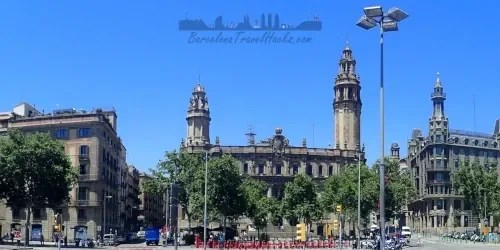 METRO
METRO
Barcelona Central Post Office – Historic Correos & Telegraph Building
Visit Barcelona’s grand Central Post Office, a 1920s Catalan Modernist landmark with a stunning frescoed dome. Send mail or admire its architectural beauty
Read more >
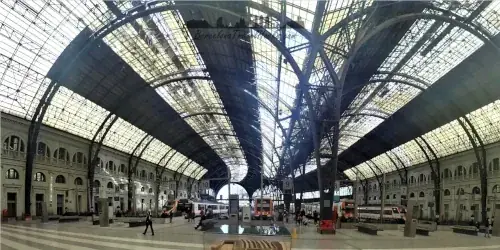 METRO
METRO
Estació de França | Barcelona’s Grand Historic Train Station
Elegant iron architecture, marble domes, and natural light define Estació de França — Barcelona’s most beautiful train station since 1929
Read more >
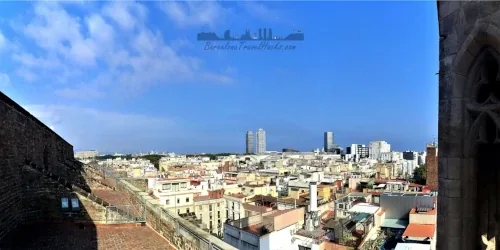 METRO
METRO
Santa María del Mar Cathedral | Gothic Basilica in El Born
Explore Barcelona’s Cathedral of the Sea. Free entry or guided rooftop tour with crypt access. Pure Catalan Gothic architecture in the heart of El Born
Read more >
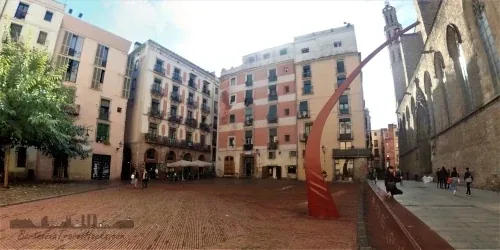 METRO
METRO
Fossar de les Moreres | Memorial to Catalonia’s Fallen
Visit Barcelona’s solemn memorial square honoring the 1714 siege victims. Eternal flame, floral tributes, and Catalan history in El Born
Read more >
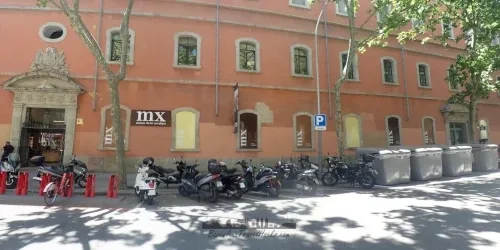 METRO
METRO
Museu de la Xocolata – Barcelona Chocolate Museum & School
Discover the origins of chocolate in South America and its journey to Europe. Explore myths, medicinal uses, and traditions at Barcelona’s Chocolate Museum
Read more >
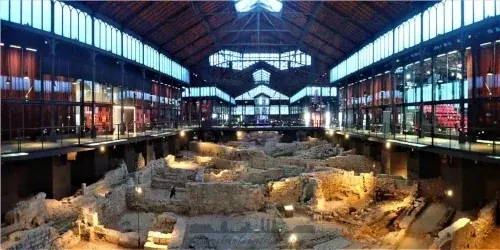 METRO
METRO
Born Cultural Centre Barcelona | Ruins, Museum & Guided Tours
Explore 1714-era ruins beneath a 19th-century market at El Born Cultural Centre. Free entry, guided tours, and powerful stories of Barcelona’s past
Read more >
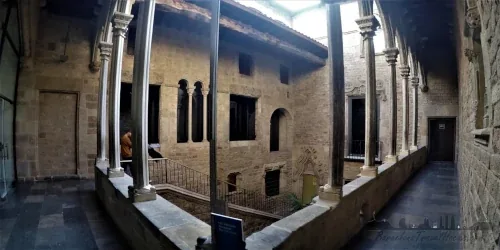 METRO
METRO
Picasso Museum Barcelona | 4000+ Works in El Born Palaces
Explore Picasso’s early works, ceramics, and cubism in 5 medieval palaces. Tips, tickets, free entry days, and guided tours in El Born, Barcelona
Read more >
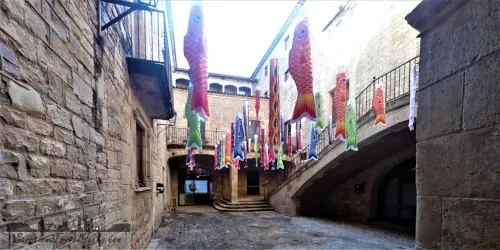 METRO
METRO